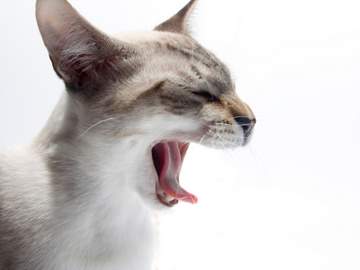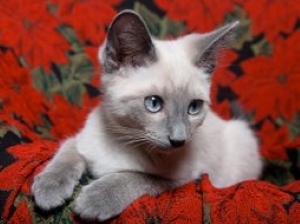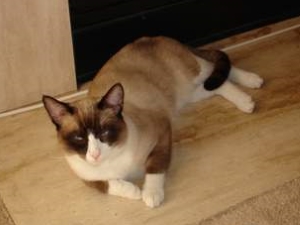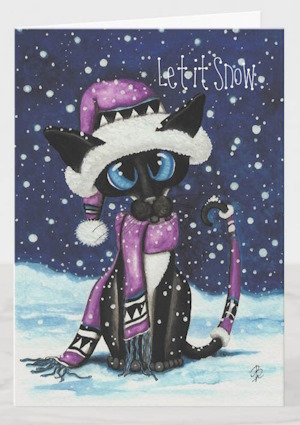Hairballs in Cats: Prevention, Treatments and Remedies
What Are Cat Hairballs? An Explanation
Hairballs in cats are created when they groom themselves. Cats' tongues are covered in hundreds of little barbs that act like brushes, effectively removing hair as the coat is licked.
These barbs point towards the back of the mouth and move the hair towards the throat, so once the hair's in the mouth, the cat has no choice other than swallowing it.
A hairball occurs because the individual hairs then collect in the stomach, turning into a solid, matted mass of fur. There are then two possible routes to go – either the hairball gets vomited up or it moves further down through the intestines.
If a hairball is thrown up it may weaken the cat for a few days, but fur balls can be very problematic if they reach the intestines, where they can cause constipation and intestinal blockages.
 I hate hairballs!
I hate hairballs!Image © iStockphoto | thepropshoppe
Veterinary Treatment for Hairballs in Cats
If the problem is serious, treatment by a vet may include an operation to remove a more serious blockage.
At the very least, your vet will probably need to prescribe a laxative. So if you can, it's important to prevent cat hairballs being created in the first place.
Preventing Hairballs
A common problem in long-haired breeds, the best prevention for hairballs is undoubtedly regular, efficient grooming.
Long-haired cats need daily brushing, both to prevent hairballs and to keep their coats in good condition. Short-haired varieties can be groomed less frequently – once a week is probably enough.
Cats will of course groom themselves more frequently if they're dirty, so keeping them as clean as possible is important. Long-haired breeds, especially, can benefit from occasional bathing. Keeping them indoors can help, too.
Cat Hairball Remedies and Medicines
You can buy over-the-counter proprietary medicines for hairballs – mild malt-flavored lubricating cat laxatives that contain white soft paraffin and cod liver oil.
These can be given to cats prone to hairballs when they're moulting, but do check with your vet, before buying anything over the counter, that the remedy is suitable for your particular pet.
Another cat hairball remedy (an old breeder's trick) is to use a small dab of petroleum jelly. Dab it on the cat's nose or paws, where it will get licked off and act as a mild laxative.
Cat Food for Hairballs
A number of cat food manufacturers now make special 'hairball formula' cat food. These contain natural fiber, which aids digestion and keeps hairballs moving through the intestines.
It also helps to prevent the formation of new fur balls, as the fiber mixes with the hair in the stomach and stops it from matting. Hairball foods are also said to improve the quality of the coat, reducing shedding and therefore the amount of hair removed by grooming.
Prevention Is Better Than Cure
Unfortunately, hairballs in cats are quite common, unpleasant for the cat, and can sometimes result in big veterinary bills. In felines prone to hairballs, prevention is always better than cure.
Related Pages
Some of the articles and newsletters on this site may contain links to products I think you may enjoy. If
you purchase through these links I receive a small commission, but there's
no extra cost to you. Find out more on the Affiliates Disclosure page.
Have You Discovered Our Newsletter?
If not, why not? Subscribe to our email newsletter, Meezer Musings, to stay in touch, be the first to see new information and pages as they come out, and read the things we only talk about in the newsletter.
Learn more about it on our Newsletter Sign-Up page.




